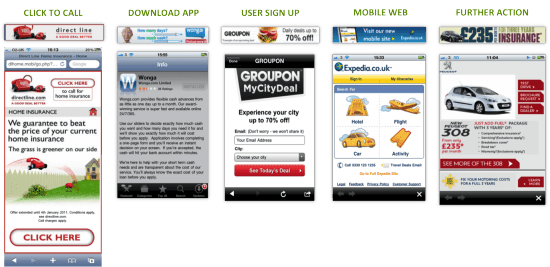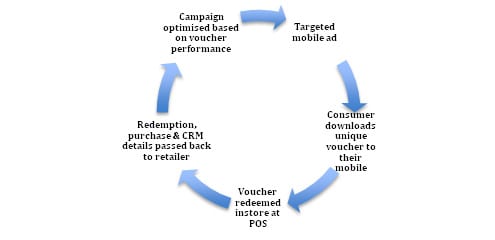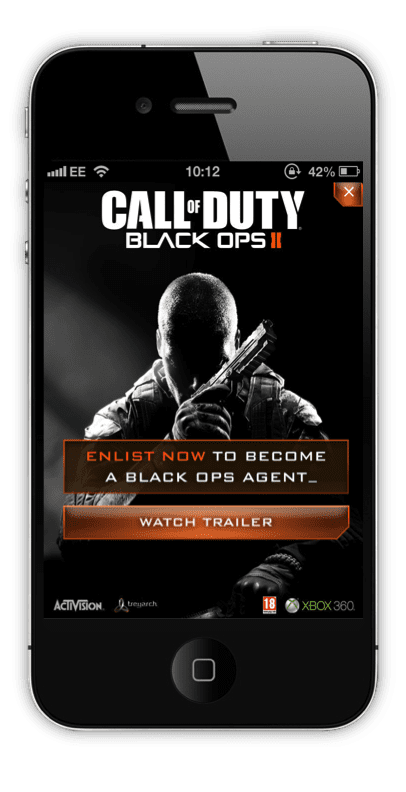Earning attention is the key to mobile advertising success.
About time too! I was delighted to read last week that the UK’s Information Commissioner Christopher Graham has imposed a hefty £440,000 fine on the two SMS spammers responsible for bombarding me and the other 840,000 mobile users with unsolicited texts about personal injury claims.
This news is a timely reminder to all brands that they must respect consumers’ privacy when engaging in mobile marketing and mobile advertising: The Privacy and Electronic Communications Regulations exist to protect mobile users from receiving unwelcome messaging from brands.
Likewise, a scatter-gun approach to mobile advertising be viewed in the same light as SMS spam:
Responsible marketers should be aware of the risk of intruding on consumers’ mobile lives with unwanted advertising.
Richard Eyre, Chairman of the IAB UK, summed up the issue earlier this year at IAB Mobile Engage: “There’s a sublime chemistry between consumers, their mobile devices and application providers. Mobile is becoming more and more adept at dealing with our communications, our information, our discovery, our learning. Mobile is the ultimate enabler”.
Mobile users invest their own time creating their own devices, with personalised wallpapers, games and apps. When consumers have invested their time creating their mobile device, they don’t want to be hijacked. “You can participate as a brand, join in with my mobile place, but don’t invade it with foreign things that I didn’t pick to be there” Eyre continued.
This does not mean marketers should steer clear of mobile advertising, but it does mean they should consider carefully the user experience, and the value their advertising brings to the consumer.
In a slick workshop at the #iStrategy conference at Twickenham this week, mobile advertising specialist Millennial Media presented the clear 4 step process to earn consumers’ attention, and avoid the risk of unwanted or ineffective advertising.
Step 1 – Micro-targeting
Mobile is unique in providing targeting possibilities in multiple dimensions. Consider the impact of leveraging customer insights and smart ad serving technology to gain traction across these targeting variables:
- Tactical targeting: reach consumers based on the characteristics of their device and data connection e.g. device type, operating system, network Wi-Fi.
- Content based targeting: reach consumers based on the types of content they are consuming e.g. automotive, finance, games, music, news, social, sports
- Demographic targeting: reach consumers based on their demographic characteristics e.g. age, gender, household income
- Behavioural targeting: reach consumers based on real world actions and behaviours
- Contextual targeting: reach consumers based on what is happening around them at that moment in time e.g. by location, by day part, by situation - at an event, at an airport, in a shopping mall
- Proximity targeting: enables the advertiser to present relevant offers to consumers at the right moment in the right place
- Retargeting: reach consumers who have already expressed interest or exhibited favourable intent for your product or service
Step 2 – Compelling creative
Many Agency Creative Directors reject mobile as being a small screen for small ideas. Their more enlightened counterparts see the massive opportunity to achieve mass market reach with engaging, fun, interactive brand experiences which enrich consumers lives in a positive way.
There’s an extensive interactive banners, full-page interstitials and a range of video formats to provide rich media engagement.
Touchscreens have revolutionized advertising: 27% of respondents claim they are more likely to interact with ads because they have a touchscreen (Source: IAB Three Device Lives research). The mobile handset’s accelerometer, orientation and location add additional engagement, allowing brand messages to be presented in new and unique ways.
Let’s not forget that user experience is everything, and mobile users expect quick, easy, intuitive activation of ads as they do with other mobile bahaviours. Use familiar icons to deliver visual shortcuts to enrich the customer journey. Here are some examples of effective ads in the context of the consumer journey:

Watch Richard Eyre's video on overcoming the challenges of mobile engagement and showing the range of options to deliver contextual calls-to-action.

Step 3 – Make it social
Google’s view that mobile success is all about ‘time’ springs to mind. Mobile helps us save time (when we’re busy), kill time (when we’re waiting), and share time (when we have good or bad experiences we want our networks to know about).
60% of the world’s Facebook users engage via mobile, Twitter is the ostensibly a shared experience which plays out spontaneously, regardless of our location, and we have a dizzying array of mobile and tablet platforms on which to send, receive and analysis Twitter traffic.
Remember to add Twitter and Facebook icons to maximise sharing.
Step 4 – Trial, measure, adapt, rollout
As every mobile engagement, delivers a time and location based data trail marketers can track in real-time the effectiveness of mobile ads in achieving the desired call to action - click to call, click to register, click to browse (site), click to install (app), click to play, click to buy.
Developments in the mobile couponing arena make this level of transparency a key point of difference for brands competing for customer spend.
Brands capturing data at the point of sale can track the customer’s route to purchase back to the origin of mobile voucher, whether delivered via SMS or QR code activation via on-pack or in-store promotion, above the line media, mobile ad or CRM push notification.

Source: Millennial Media
A mobile advertising case study from Call of Duty
- Goal
In the cut-throat gaming market, competing brands must deliver mass awareness in engagement prior to market launch and generate social media buzz.
- Strategy
Targeting – male environments, including Games, Social & Entertainment channels
Brand Creative – Rich Media Photo Shoot & video trailer
Social – Consumers use the cameraphone to superimpose create their own avatars in the game, and share their photos on Facebook. A second unit enabled Tweets to their Call of Duty profile, directly from within the creative
Eric Folliot, Senior Brand Manager, Call of Duty attributes the campaign success to earning the attention of gamers, and providingrich engagement.

"Mobile is increasingly becoming a key touchpoint for our core and growth audiences, and the flexibility that the campaign offered really drove the success of the campaign. We were able to provide a variety of rich content to our audience in a personalised way that other touchpoints couldn’t offer.”










